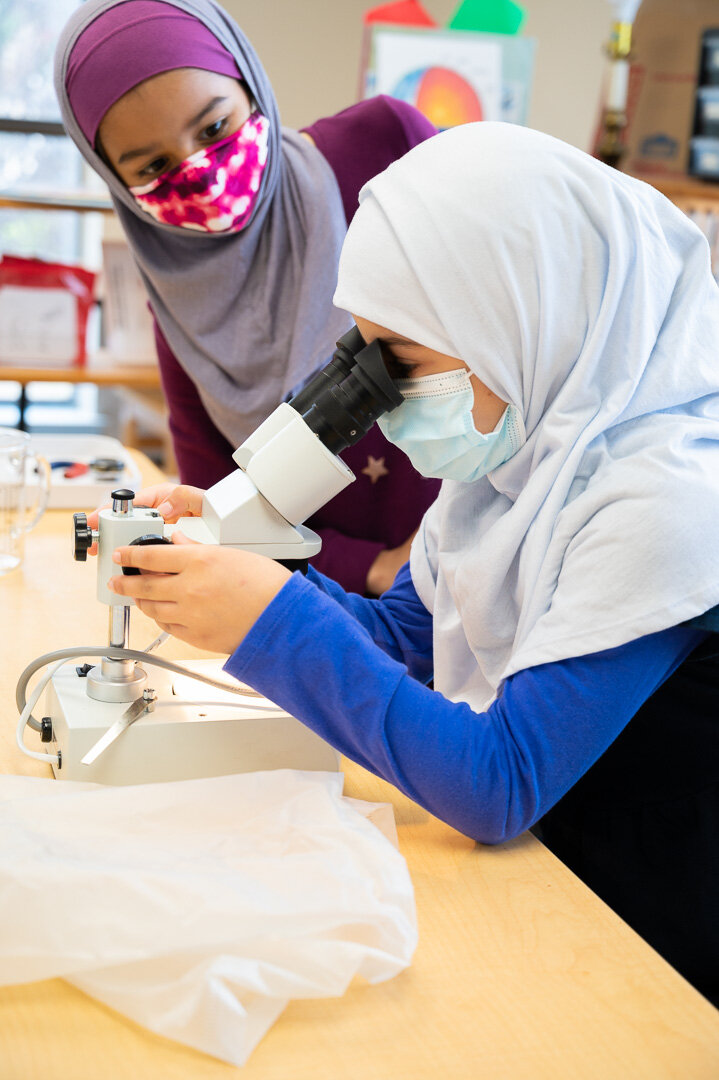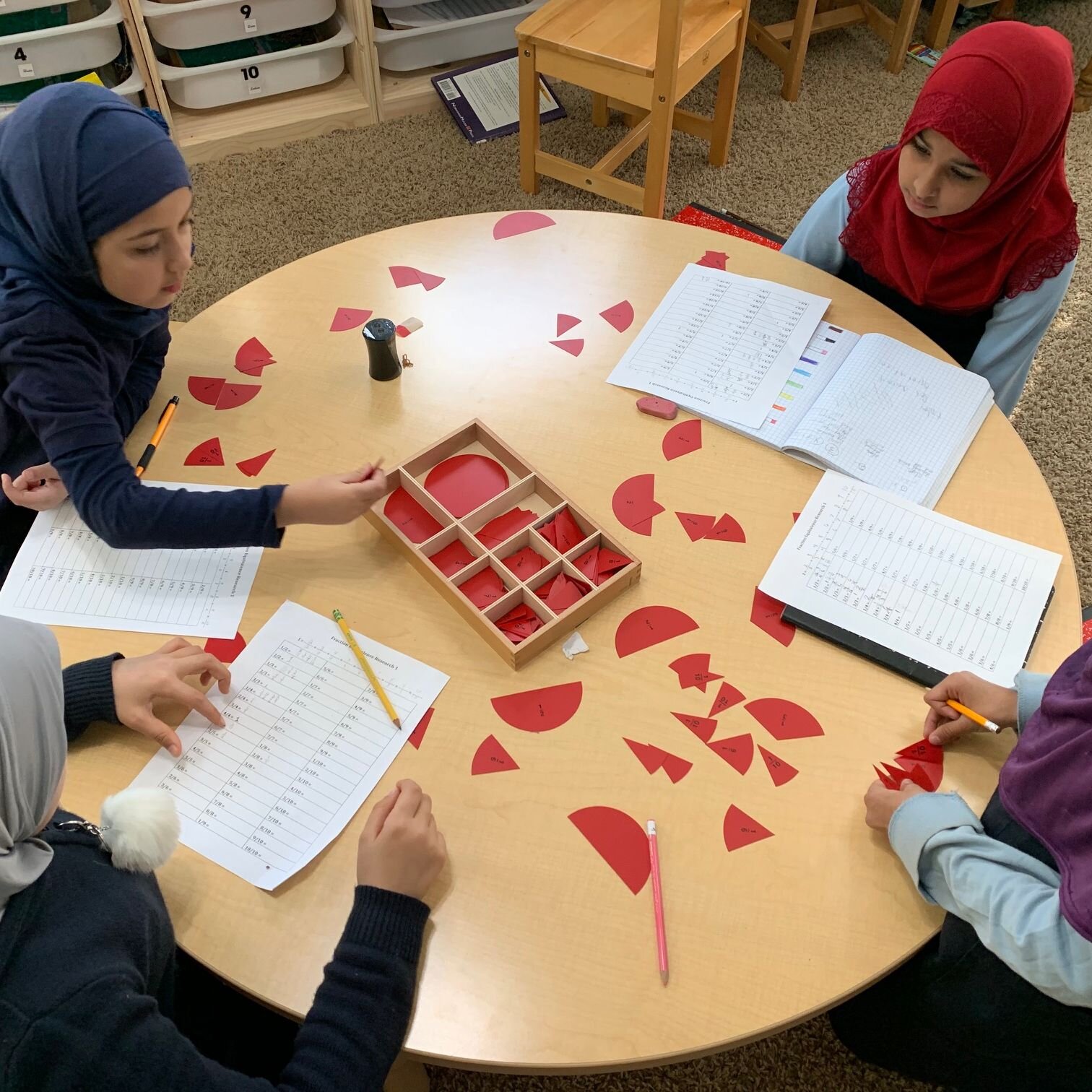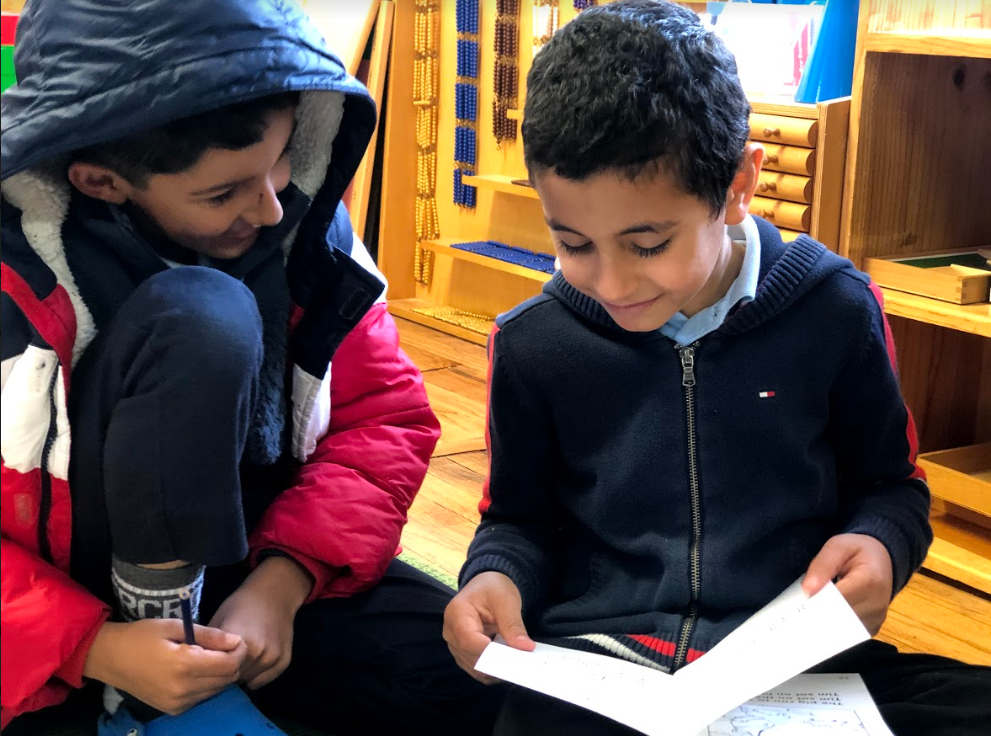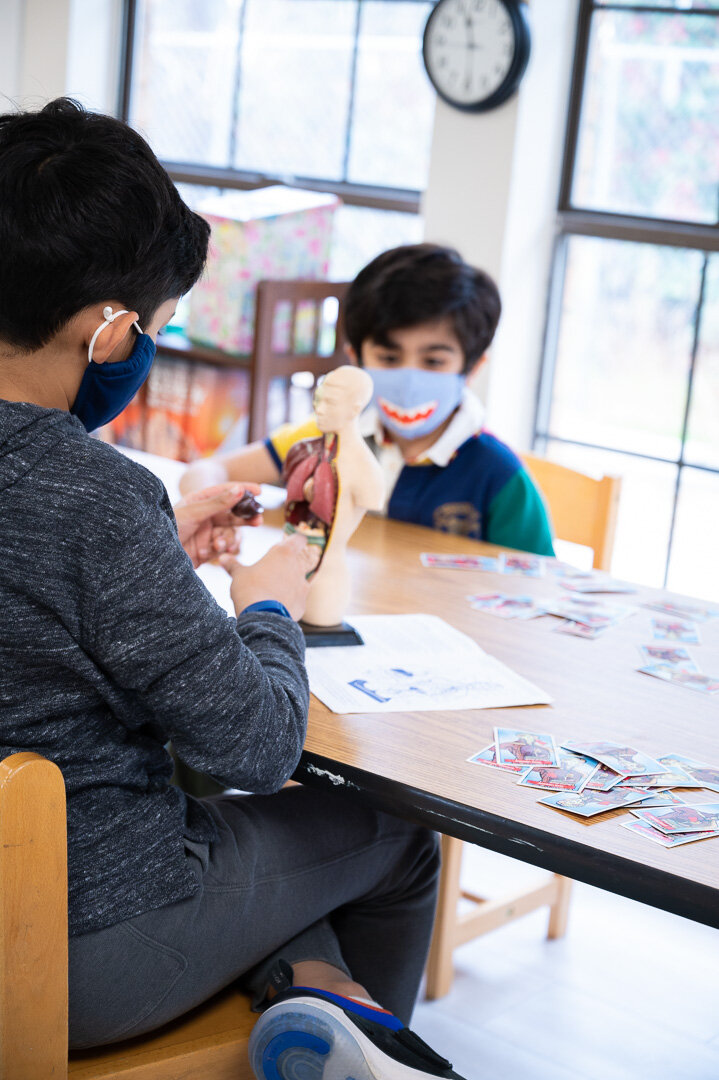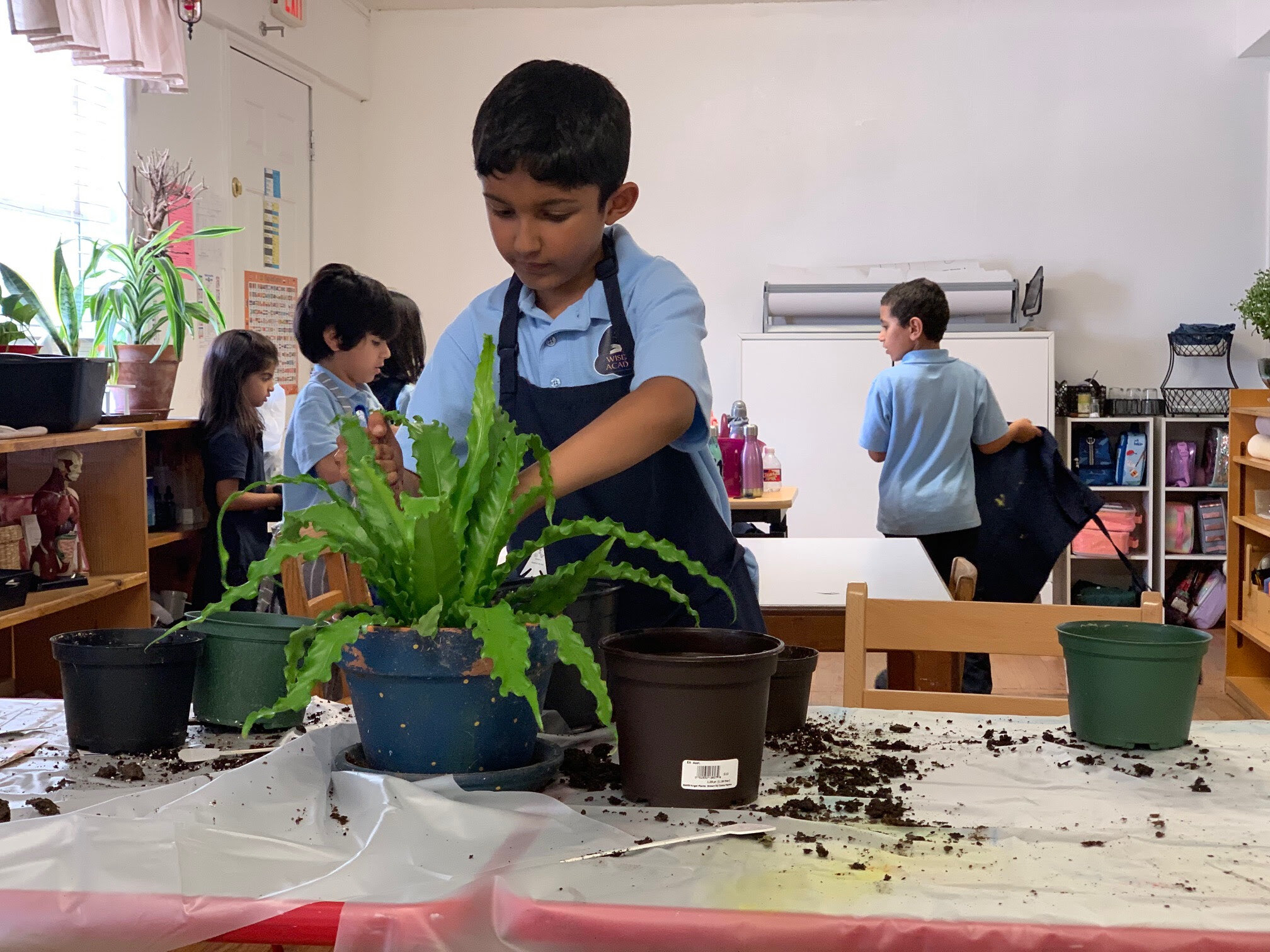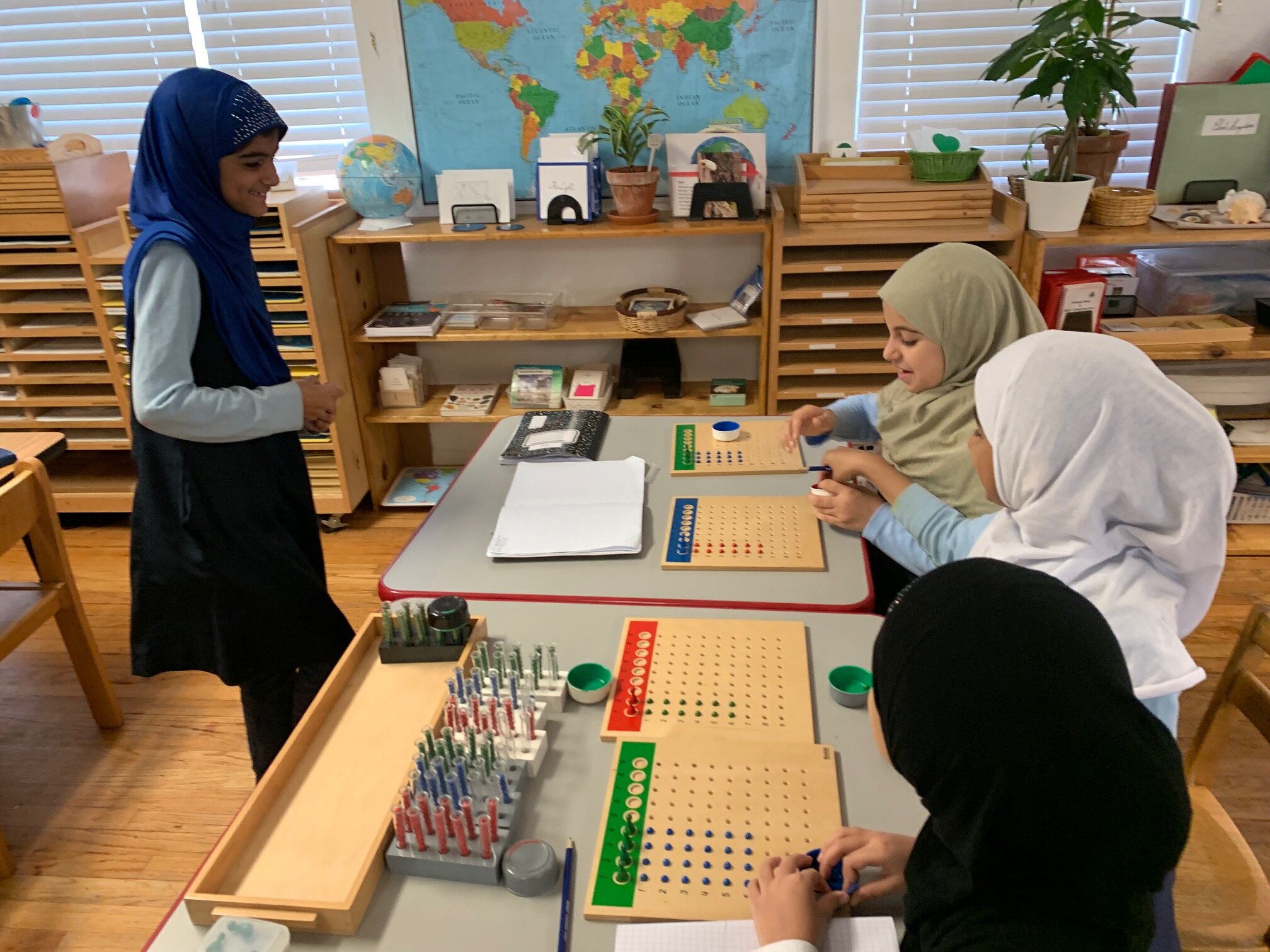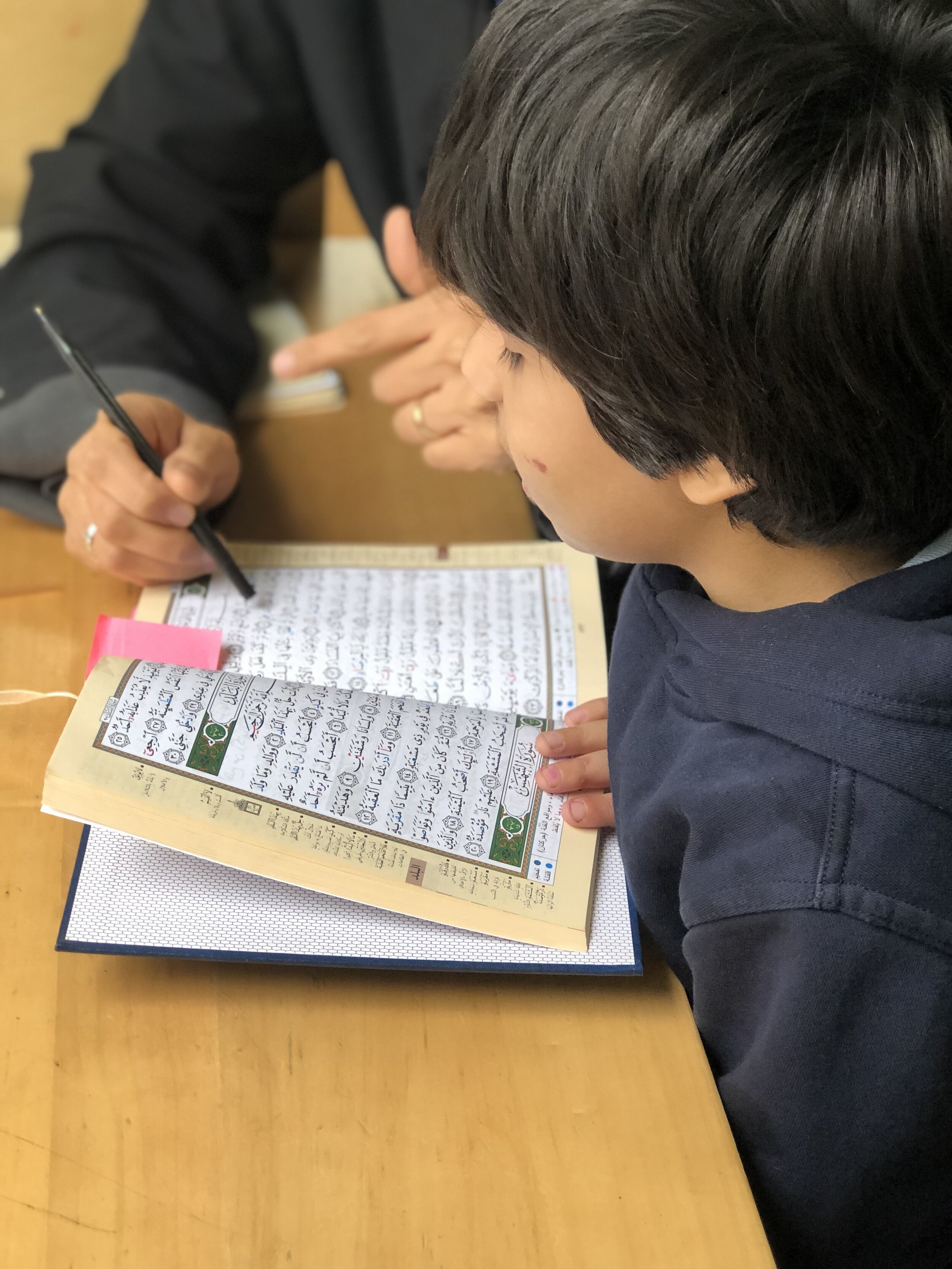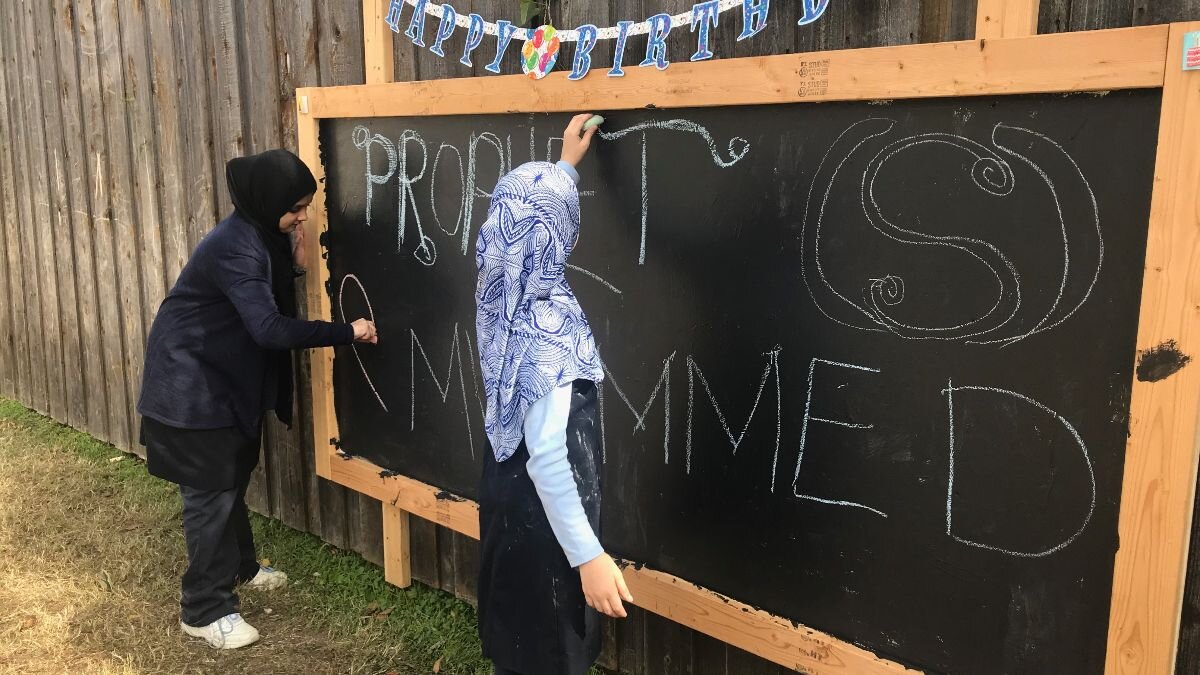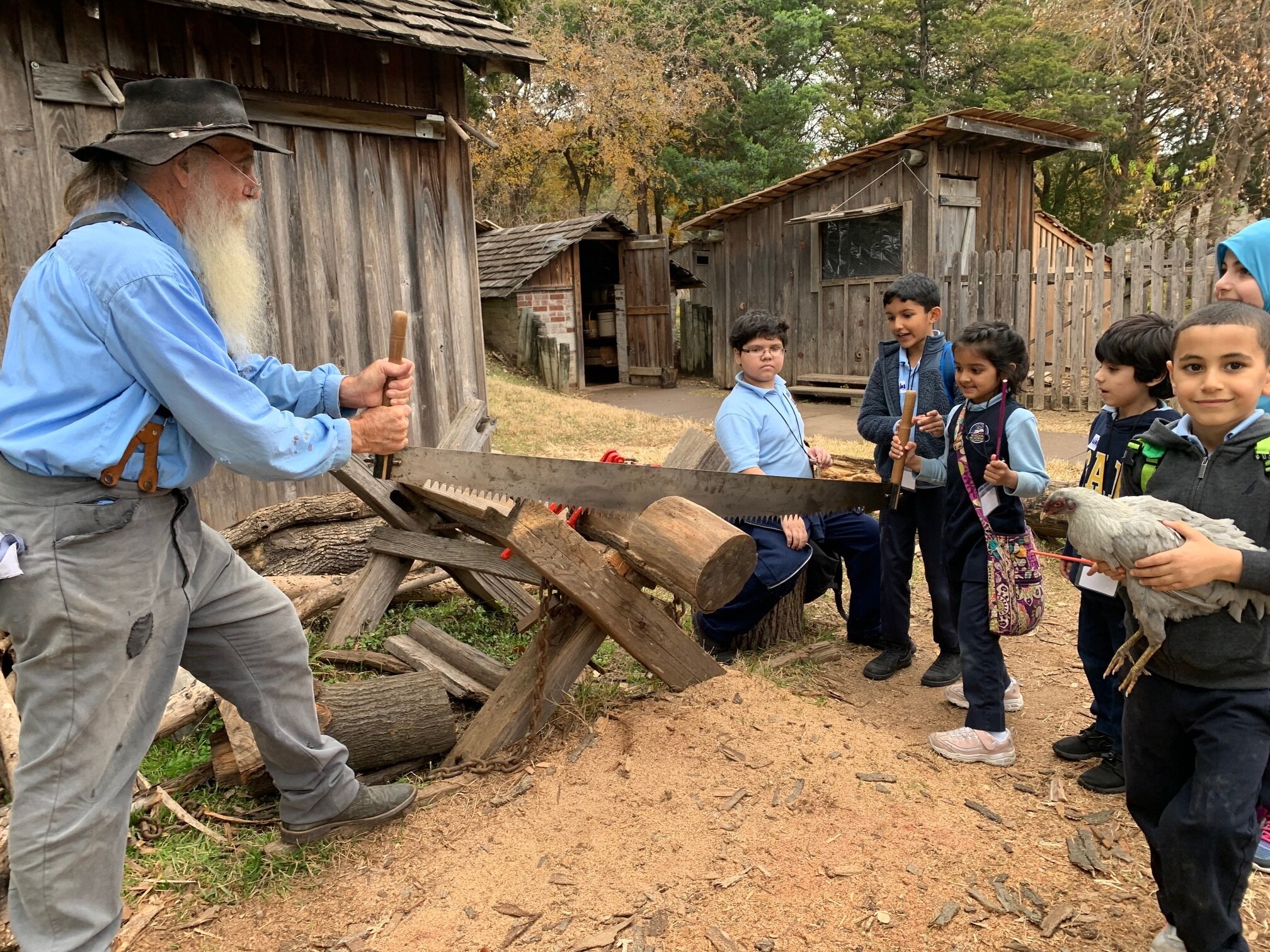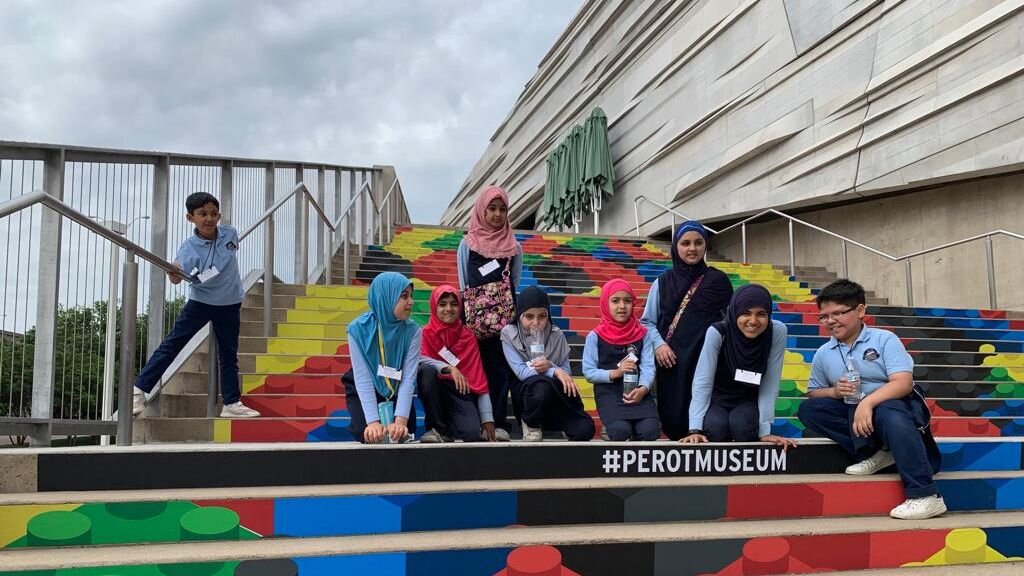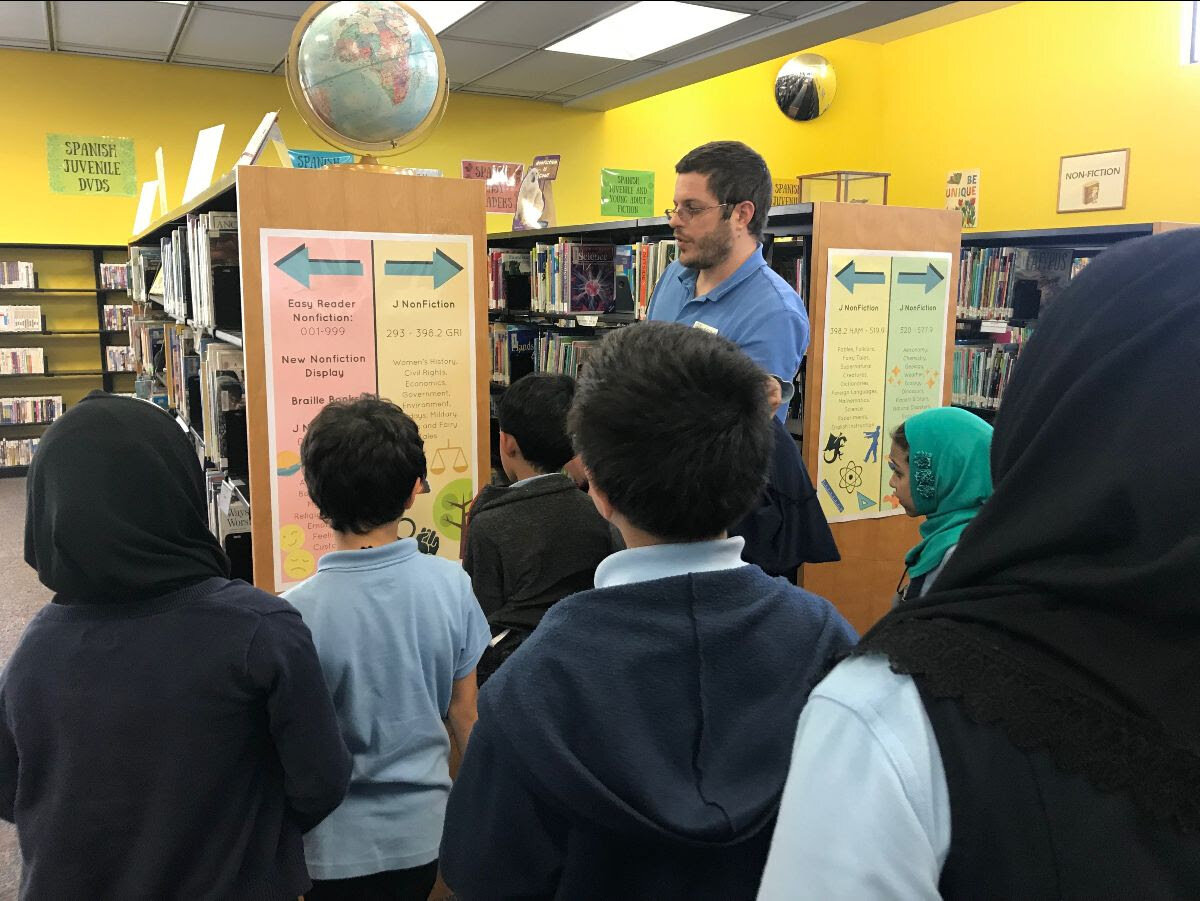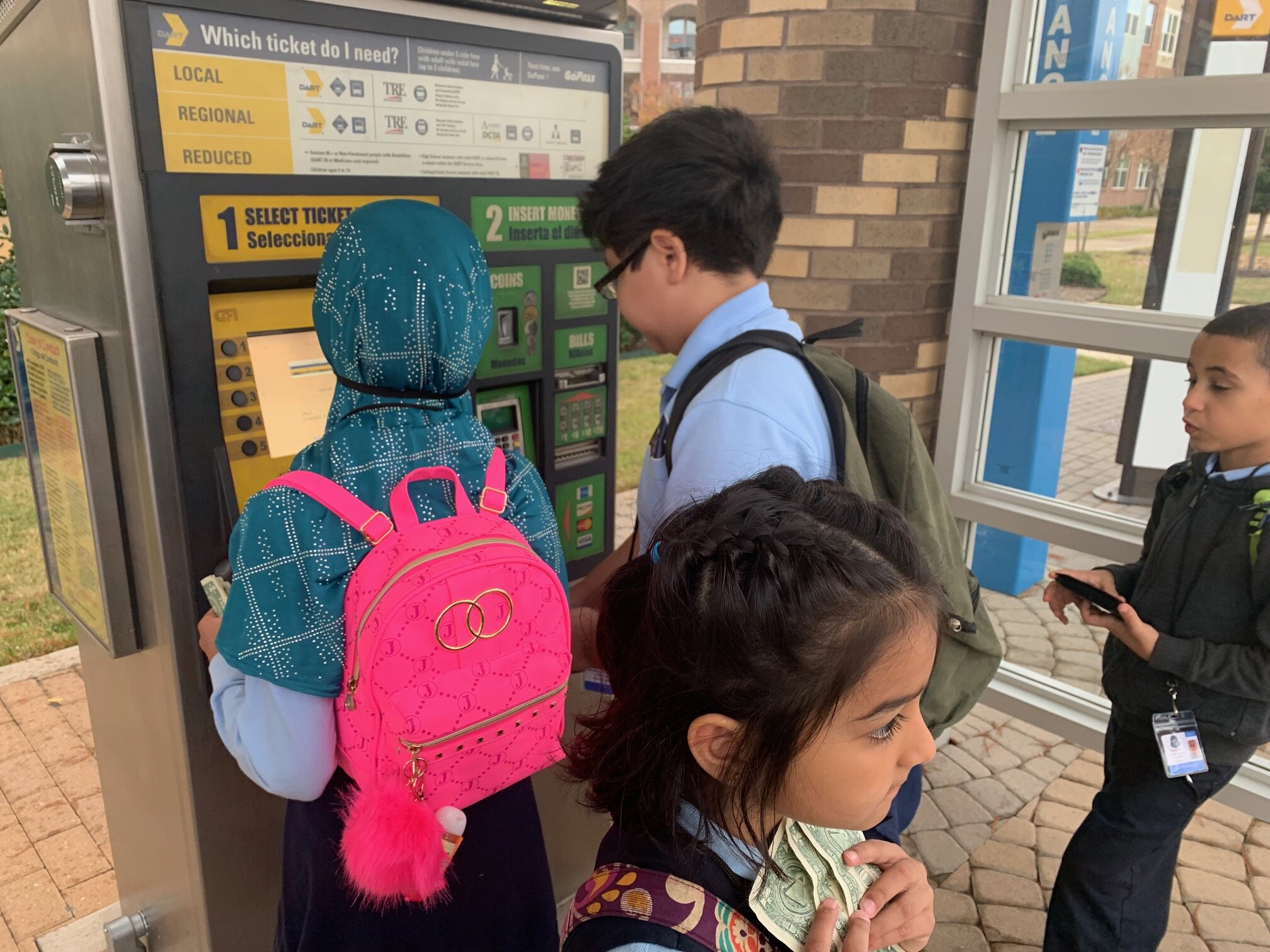THE ELEMENTARY PROGRAM
Grades 1-5
The Elementary Program is designed to fully engage six- to eleven-year-olds (Grades 1-5) in learning—to leverage their sociability, their curiosity, and their drive to contribute to their community so they can acquire the skills and knowledge they need to flourish in life. Our program offers an unparalleled opportunity for the ongoing development of your child who has been nurtured in the Primary program. He is entering a new period in his life; this imaginative, social, creative child needs a planned environment and expansive course of study to support his independence and potential. Our prepared environment is designed to meet the needs of your child in this phase of development. This experience will shape not only his knowledge and skills, but also his attitude about learning for the rest of his life.
The Elementary Curriculum
Language
Language is rooted in the necessity that man needed to communicate. It is that every word used today was invented by someone before us. Language in the Elementary opens with a Great Story linking the language and the need to communicate with humanity’s greatest works. Language is the vehicle for children to acquire knowledge. It becomes more abstract in Elementary. Language consists of word study, parts of speech, logical and sentence analysis, language expression, written and spoken, techniques for creative writing, literature of the past and present, literacy and handwriting.
Mathematics
Mathematics opens with the Great Story of Numerals and the history of trade and the need to keep accounts helped develop our number system. The properties of numbers are learned didactically. The perception of a unit and its comparison to a million is established early as one of the first lessons upon entering the environment. Operations with whole numbers, measurements, squares and cubes of numbers and their roots, fractions, then decimals, signed numbers, powers of numbers non-decimal bases, ratio and proportion, work problems and an intro to algebra.
Geometry
Geometry is immediately introduced as a component of everyday life. Geometry is part of a three-pronged approach to mathematics. Along with arithmetic and algebra, geometry brings stability and reinforces the approach to mathematics. The Story of Geometry begins by explaining that long ago the world needed to be measured because of the rains that flooded the Nile. This leads to work with lines, angles, polygons, the Pythagorean Theorem, the circle, area, volume, and of course, measurements and their relationships.
Geography
Geography in Montessori looks at many aspects of the physical world. It begins with the understanding of the earth’s relationship with the sun and the moon. Nomenclature of physical and political maps become study. Other work includes the composition of the earth, the work of air and water. The life on land is studies along with the interdependencies in nature and among humans. The economy is the study of production and consumption and in terms of world trade.
History
History is the chronological record of events. It begins with the Story of Human Beings, the study of civilizations, timelines, and cultures. History also catalogs its events and therefore, clocks and calendars are part of the lessons.
Science: Botany and Zoology
Logically, biology in Montessori is divided into two major sections, Botany and Zoology. Plants are the producers and animals are the consumers. Botany includes lessons all about the plant and its classification. Zoology begins with stories about animals and their body systems, and also their classification. The work also includes the study of ecosystems and interdependencies.
A Mixed Age Environment
In life human beings benefit by being around people who know more than us and solidify our understanding by teaching those who don’t know yet but are eager to learn. In the mixed-age Montessori Elementary communities (ages 6-9 in Lower Elementary, equivalent to 1st – 3rd grade, and ages 9-11 in Upper Elementary, equivalent to 4th – 5th grade), children benefit from the social dynamic of mixed-age groups in multiple ways:
Motivation by aspiring to do work done by the older child.
Mentoring opportunities—and a natural, joyful review of previously-acquired skills and knowledge.
Leadership opportunities—as older students increasingly take on the responsibility for organizing the community and managing the work of the classroom.
Improved ability to individualize learning to suit each child’s pace, independent of artificial age cut-offs.
The Fitrah as the Inner Teacher
When it comes to learning - what comes naturally, comes easily. Education should be based on human nature – the fitrah. The fitrah is the universal child’s personality. Sometimes referred to as the inner teacher, this basis brings out the essence of each child, unlimited yet focused and ready for life if properly cultivated. Imam Ali (as) has said “The most complete gift of God is a life based on knowledge.” Here, our work is to guide each child in learning. The Montessori curriculum is told through the lens of history, connecting the need to know today to the needs of yesterday.
The need to learn is a necessary tool in our lives that began from our ancestors. Montessori is different from the traditional educational system in many ways. Montessori maximizes a child’s ability to learn and develop their inner teacher, the fitrah. Lessons are given with didactic material based on the student’s needs. The variety of lessons and materials allow each child to experience a different learning style that may agree with them. Children are always active and engaged, given the power to create their own problems. Work is self-paced, allowing a child to work without interruptions to develop their skills and achieve mastery and self- satisfaction. A varied age group allows the fluidity in learning without any barriers or limits, while also allowing children to teach one another. Individual instruction and a flexible curriculum is based on a child’s needs and frequently includes child-led lessons on topics interesting to them.
The Elementary Going Out Program- A Wide Open Door
The Going Out program allows students to initiate an outing related to their research or need and find answers beyond the classroom in the extended environment - society. Society has much to offer: from the expert knowledge of college professors, to the fundamental need for interaction with a grocer for one's own sustenance, to the skills of map reading. From beginning to end, children take the lead. Adults are only observers. These opportunities provide the students with the opportunity to develop independence, communication skills, street smarts, pragmatic thinking, ultimately leading them through the process of self-construction.
“Instruction becomes a living thing. Instead of being illustrated, it is brought to life. In a word, the outing is a new key for the intensification of instruction ordinarily given in the school.”

